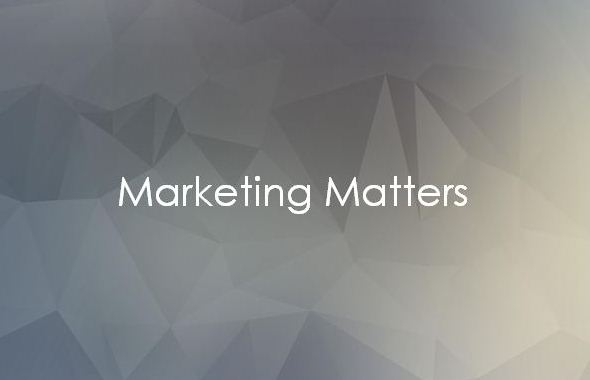Remember the book, “Good To Great” by Jim Collins, which was published in 2001? The complete title is, “Good to Great: Why Some Companies Make the Leap…and Others Don’t” (since every management text today must have a colon and an independent phrase its title). Here are the first four chapters:
- Chapter 1: Good is the Enemy of Great
- Chapter 2: Level 5 Leadership
- Chapter 3: First Who, Then What
- Chapter 4: Confront the Brutal Facts (Yet Never Lose Faith)
If you look at this book as a planning tool, it’s a step-by-step process. The first step is “mindset.” Change it. Don’t accept “Good.” As education professionals, we shouldn’t. Good is a “B”. Great equates to achieving to our potential as leaders of an organization…and as educators, we want all our kids to get “A”‘s, right? But only if they earn them and achieve to their potential. As leaders of a faith-based school, why should we accept anything less from ourselves, right? But upon further examination, “Great” is really B+ or A-. Most school administrators I know would claim “academic excellence” is a hallmark of their school, or an attribute that is constantly being pursued. After all, when parents are comparing education environments for their children, you can see the what can happen if the “great” educational program has a higher tuition than an “excellent” education program. Also, once again, “good,” “great” or “excellent” is not really something you as an educational administrator establishes in your school. While you can provide logical benchmarks delineating these attributes, a parent or guardian will investigate your school, and make their own emotional and highly subjective assessment of what is “good,” “great” or “excellent” for their child.
Perhaps those thoughts have made you think a little differently about “best” as an absolute, and to begin seeing it as subjective. If so, that’s good, since we’re going deeper into the murkiness.
Chapter two follows through with a study of what Collins calls “Level 5 Leadership.” Chapter three is “First Who, Then What” – which discusses having the right people in the right places within the organization. Only then can we confront the brutal facts (Chapter four) of the problems we have to solve or the concerns we have to correct.
Notice how all these things build upon one another. You cannot expect total success without success at the different levels. The organization requires a solid foundation on which to stand.
Now, let’s consider a Marketing Matter from just several weeks ago – one where Simon Sinek encourages us to “Start With Why.” After the “why” is known, then the “how” can be focused on, which can result in focusing on the “what” our organization does.
Taking the cue from Jim Collins, do we look at “Who” first, then “What,” or do we consider “Why” first, to lead us to “How” and then “What”?
Now let’s throw in the Strategic Planning Process, which asks three questions: “Where Are We?,” “Where Do We Want To Go,” and “How Do We Get There?”
And allow me throw in another one – “How Do We Know When We’re There?”
And let’s muddy the waters a little more. “The Little Blue Book of Marketing” by Paul Kernit and Steve Lance (published in 2009), agrees with Sinek, and suggests starting with “Why Are We Here?” as a springboard, and then refers to the “Vision” for the organization. But then, they skip over the “How,” and focus on “What” you do and “Who” you are. Then and only then, after you, according to Collins, “Have the right people on the bus,” can you proceed to the “How” you’re going to do what you need to do.
Both Sinek’s model and Kernit/Lance might be correct – it depends on the organization. If you, as the leader of the school, can craft a vision and determine a plan of action by yourself, as some people can, then you’re following the “Why –> How –> What” model. However, if you have a vision of what you’d like to see as the leader of the school, know why your school is important and worthy of support, you may need to bring some very good people on board to figure out how you’re going to create the vision…especially if your school is governed by a board.
“Why” almost assumes there is a vision. Think about it – when we ask ourselves “why” we do something, the answer starts with “Because,” but then is followed by a statement that is related to an outcome. On an organizational level, that would be the vision of the organization.
For instance, “Why should my school use a tuition management system?” “Because it automates the tuition process, helping you to capture virtually all your tuition, and so that you can focus on enrollment and development activities in order to grow your school.” This answer assumes that growing your school is a part of your vision for your school. The danger is assuming that “Vision” and “Case” (that is, “Why”) are the same, and is why many strategic planning models speak to Mission (“Who” and “What”) first, then Vision (“Why”) and Values (“How”). These are the same organizations that have difficulties developing Case statements, since “Case” speaks to “Why;” “Vision” actually speaks to “Where” you want to see your school in three years, five years, or even ten years into the future. If your school has difficulties developing Case Statements and Vision Narratives, your Development efforts may be lackluster at best, doomed at worst. Notice that Vision statements look 3 to 5 to 10 years ahead. Development is also a long-term approach to raising funds. With a compelling “Case” statement, and vivid “Vision” of where the organization should be down the road, Development needs to start now so that the vision can be shared and others can be brought into relationship with the organization. The “Ask” then generates the revenue to fulfill that vision. When the conversation moves to “We need $30,000 to balance the budget, so let’s get the Development folks to do some fundraising,” the focus has been derailed since short-term operational costs are now the matter at hand. Now the “Who” and “What” questions play an important role, since if you don’t know “Who” to contact and “What” to do to put out this fire.
This is why it helps to know if your school is operating from a “Why”–>”Where” –> “How” –> “What” model where the “Who” is at the beginning of the process, or the “Who” happens after the “How” has been determined.
Notice that “When” is not included in either of these strategic models. That’s because “When” is both immediate and future oriented. It must be considered all the time, yet focusing on it all the time can stifle, frustrate and cause undue stress to the organization, its leadership, and the people it serves. The most concrete example is the expectation of results when it comes to “Fund raising.” (Note the space between the words.) Most organizational boards think that once a development professional is hired, money will come flowing into the organization. When it doesn’t, a new person is brought on board. The unfortunate thing is that development requires relationships to be built before significant funds can be raised. Unfortunately, boards don’t want to hear that, and because they don’t, organizations continue to suffer.
What does all this have to do with marketing? Knowing the answers to these questions (Why, Where, How, What and Who) relative to your school will help you when talking with parents, donors, church and parish supporters, local businesses and community members. As for revisiting “Good To Great,” you may be able to get “the right people on the bus,” and even get the those people in the right seats, but it really helps to know where the bus is going. If you’re going uphill, that’s great, since you can see the road ahead of you. When you can’t see the road ahead, there could be a great chasm that lies between where you are, and where you want to get to. Referring back to the full title of “Good to Great,” you just might have to “make the leap.”
© Michael V. Ziemski, SchoolAdvancement, 2010-2020 (Original Publication Date: 20100801)

